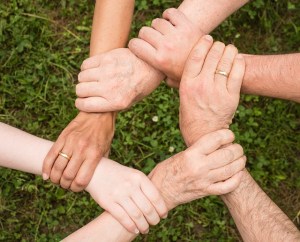Happy National Healthcare Decisions Day (NHDD)! The Day’s purpose, according to the Conversation Project (www.theconversationproject.org), the organization that promotes and manages it, is to “demystify healthcare decision-making and make the topic of advance care planning inescapable.”
In short, it’s a way to get us all talking about what we normally would prefer not to talk about at all, which is mortality; as well as our preferences for the kind of care and treatment we would want for ourselves if we were gravely ill and couldn’t speak for ourselves.
If you don’t already have an advance care plan (also known as a living will), or if you haven’t decided who will be speaking for you (your health care proxy), the best present you can give yourself and your loved ones for NHDD is to create one and designate a proxy. And if you are caring for elder parents or relatives, now would be a good time to ask them about their advance care plans too. Your proxy needn’t be your spouse, significant other, son or daughter. It does need to be someone who can be tough-minded if necessary, and dedicated to carrying out your wishes, even if they wouldn’t make those same choices for themselves.
Where to begin? First and foremost, get better educated about some of the kinds of treatments you may or may not want, like CPR, feeding tubes, pain control and mechanical ventilation (about which we’ve all seen way more than we might have expected to during the pandemic).
Second, think deeply about your own values: If you had a limited amount of time left to live, or were limited in how you could communicate if you had dementia, for example, what would be most important to you? What are your hopes for the future? What would make life continue to be worth living? Be aware that your feelings may change over time and circumstances may change too, so keep revisiting the subject. It’s not a one-time conversation, either with yourself or with your loved ones.
Don’t Keep It a Secret
Third, don’t keep your preferences a secret. Document your wishes — put it in writing. There are plenty of examples to follow. One of my favorite advance care directive templates is Five Wishes, (http://www.agingwithdignity.org/forms/5wishes.pdf) mainly because it’s very clear, written in plain English, and covers the important bases. Another useful source for advance directive templates is Caring Connections, a program of the National Hospice and Palliative Care Organization (NHPCO). You can find advance directive forms (free) for each state on its web site: http://www.caringinfo.org/i4a/pages/index.cfm?pageid=3289.
You can also record yourself on video, keep it in your phone, or on a thumb drive, and send a copy to your health care proxy.
And of course, now there are apps for advance care directives too. The American Bar Association has a My Health Care Wishes app https://www.americanbarfoundation.org/uploads/cms/documents/flyer_for_smart_phone.pdf It can be stored in pdf or word form on your smartphone or tablet. To find other apps, try https://www.caringinfo.org/planning/advance-directives/digital-video-advance-directives/
Advance directives are not set in stone. You can change your mind, and your directive, at any time, depending on changes in circumstances. Bear in mind, too that it’s possible for these documents to fall between the cracks in our fragmented health system. Even if your primary care physician has a copy, for example, the specialists who may be tending to you may not. So you or your proxy should not be shy about reminding physicians, administrators or whoever is in charge of your care, that your directive exists.
For NHDD 2023, give your loved ones the gift of eliminating the burden of guessing what path to pursue if you’re seriously ill. Spare them the guilt over second-guessing their decisions. Short-circuit a toxic brew of family dissension that could poison family relationships for years to come, as can happen when family members disagree about how best to manage your care.
Mortality, loss, grief – it’s all tough enough to bear under the best of circumstances for the people who love you. You can ease their pain when you speak for yourself through a directive.
And on a personal note…Although I haven’t blogged since pre-Covid days, it’s nice to be back! If there’s anything you want to read about here, let me know!








